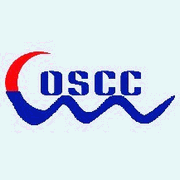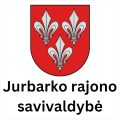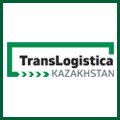2012-05-07
MAN recorded its highest ever market share in the Danish truck market in fiscal year 2011 at 23.3 percent. This enabled MAN to confirm its top position in Denmark, where it was already at a leading level the previous year with 20.8 percent.
Denmark is a key production and development site for MAN. MAN is the global leader in the market for two-stroke large-bore diesel engines. The know-how for this primarily originated from the development center in Copenhagen. Total revenue in Denmark amounted to around €134 million in 2011.
With more than 2,000 employees and almost 80 vocational trainees, MAN is a large employer in Denmark. In addition to the workforce at MAN Truck & Bus, a large majority of the employees are based at MAN Diesel & Turbo’s three sites in Copenhagen, Frederikshavn, and Holeby. “Our Danish employees are an important part of the MAN family. Their dedication and their high level of expertise form the very foundation of our leading technology and market success,” explains Jörg Schwitalla, Chief Human Resources Officer of MAN SE.
MAN Truck & Bus has had a strong, constant market share of around 20 percent in the truck market for years. MAN primarily has a leading position among hauliers operating in international trade. According to Christian Barsøe, Head of MAN Truck & Bus in Denmark: “Our strong market position shows that customers trust MAN. These enduring relationships with customers are important to us.” MAN Truck & Bus’s main office is in Greve/Copenhagen and it has another five branches throughout the country’s regions. Two private dealers and ten service partners also ensure that MAN is present in the sales and servicing business.
Around half of the world’s entire trade is moved by MAN; the lion’s share is transported by ship. When it comes to two-stroke engines that drive large container ships, freights, and tankers, MAN’s market share is particularly high. To make these engines more efficient and low-emission still, engineers at the R&D center in Copenhagen intensively research innovative technologies. In 2011, MAN Diesel & Turbo chalked up another significant achievement in the large-bore diesel engine segment in relation to the Tier III emission limits set by the International Maritime Organization (IMO). An MAN licensee built the world’s first two-stroke engine that already meets the emission standard applicable from 2016. The engine features second-generation EGR (Exhaust Gas Recirculation) technology and is being tested as a prototype on a Maersk Line freight ship. “Our engineers have achieved a great deal by quickly developing this engine. The fact that we already meet the 2016 standard shows just how innovative MAN is,” says Thomas Knudsen, Head of the Low Speed business unit at MAN Diesel & Turbo.
Both of MAN’s business areas have a long tradition in Denmark. MAN Truck & Bus was represented as far back as the 1930s by an importer that was then taken over in 1979. Our marine diesel engine business has ties with Denmark that go back even further. More than a century ago, it cooperated on diesel engines with shipbuilder Burmeister & Wain. Together with MAN, Rudolf Diesel spent the period from 1892 to 1897 designing an engine at the Augsburg site, which was later named after him, and readying it for production. One of the first licenses back then went to Denmark. Burmeister & Wain then went on to deliver the first diesel-powered ocean-going ship, the MS Selandia, in 1912 – a milestone for the international shipping industry. Following many years of cooperation with Burmeister & Wain, MAN eventually took over the shipmaker’s engine business in 1981.
Cource MAN SE
Thanks to the modular product system, Scania's Euro 6 engines can be specified for virtually any application on the market. What’s more, the Euro 6 installation does not take up any extra space on the chassis. The vehicle is a fully equipped sewer cleaner. Also on display is a light all-wheel-drive truck chassis for fire and municipal purposes.
The four-axle Euro 6 sewer cleaner is a masterpiece of packaging. The bodywork occupies most of the empty space between the axles. Thanks to Scania's space-efficient Euro 6 solution, with a silencer unit of the same size as for Euro 5, the work is straightforward for the bodybuilder – i.e. the installation is unchanged.
Despite its compactness, the silencer unit contains all the elements necessary for the complex Euro 6 aftertreatment process. The exhaust gases first pass through and oxidising catalyst that condition the exhaust gases for the next step in the process, through a particulate filter to remove particulate matter, via twin SCR catalysts to remove NOx and then out through twin ammonia slip catalysts that remove any ammonium remaining in the gases. All this is contained inside the silencer.
“Installing such complex bodywork on the Scania Euro 6 chassis was quite straightforward,” says Brian Stage, MD of Danish bodybuilder J Hvidtved Larsen A/S in Silkeborg. “The bodywork is identical to that fitted to a Euro 5 vehicle, which is a great advantage from a cost and lead-time perspective.”
The sewer cleaner is a Scania G 480 8x2 with two steered front axles and a hydraulically steered tag axle behind the driven axle. The 13-litre Euro 6 engine produces 480 hp and a generous 2,500 Nm of torque, which is ample for powering the vehicle as well as the power take-offs for the auxiliaries. The Scania P 310 4x4 has a 9-litre Euro 5 engine and is around 700 kg lighter than a corresponding 13-litre vehicle.
Scania introduced its first Euro 6 engines one year ago to enable foresighted operators to take the first step to the next emission level. Scania Euro 6 vehicles have since been in operation with customers and tested by the press with excellent results.
The Euro 6 legislation will come into force for new models on 31 December 2012 and for all new vehicles one year later. The legislation has now been adopted and enabled Scania vehicles to be registered as Euro 6 in several countries. Incentives to encourage operators to invest in cleaner technology are currently being adopted by authorities in some European countries.
Source Scania
Development of a feasibility study of the Tajikistani area of the project for the construction of China-Kyrgyzstan-Tajikistan-Afghanistan-Iran railway is to be completed by September of this year, reported the Iranian media.
The question of construction of a railroad from Chinese Kashgar to Iranian Mashhad through the territory of Kyrgyzstan, Tajikistan and Afghanistan was discussed at a meeting of Minister of Road and Urbanization Ali Nikzad with visiting Tajik Minister of Transport Nizom Khakimov on Sunday.
The parties have reached agreement on the finalization of the feasibility study of the Tajikistan project within three months.
Nikzad urged the Tajik side to provide the Iranian company Metra, which is developing a feasibility study, with all the necessary data.
That road is to increase trade exchange between all the countries through which the railway line will be laid, as well as reduce the cost and time of transporting goods, said the Iranian Minister.
In turn, Minister of Transport of Tajikistan reported that the total length of the Tajikistan area of the road will be 392 km, of which 270 km are the most difficult to build, as it requires the construction of 16 km of tunnels and 47 bridges. According to Khakimov, the construction of each kilometer of the most difficult section requires $ 10 million.
Tajik Minister is in Iran to attend a two-day international conference "South Khorasan: Transit and Development of East axis," which opens in Iran's eastern city Birjand on Monday. The conference will bring together representatives of 18 countries.
Central Asian News Service, en.ca-news.org
Dry bulk and liquid cargo handling capacities will be increased to a combined 20 million tons per year; multi-purpose quay will be extended 1,200 meters as the “Salalah Hub” establishes itself in the region.
Oman’s Ministry of Transport and Communications has awarded a commercial bid representing investment of OMR 55 million ($143 million USD) to more than double the Port of Salalah’s general cargo handling capacity. The project will increase dry bulk cargo handling capacity to 20 million tons and liquid cargo to over six million tons annually. The current annual general cargo handling capacity is 5.5 million tons.
“The general cargo business has been growing rapidly here, and this new expansion will play a significant role in serving the continued development of businesses in Oman and the surrounding region” stated Port of Salalah’s CEO, Peter Ford.
The Port of Salalah, astride the major global shipping lane between Europe and Asia on the Gulf of Oman in the Arabian Sea, holds a strategic position for transit cargoes to the upper Arabian Gulf, Indian sub-continent, Red Sea and East African markets. Salalah was the 2rd-largest containerport in the Middle East Region in 2011 with volume of 3.2 million TEUs. In its 14th year of operation, the Port of Salalah will handle its 30 millionth TEU this month with the first eastbound call of the G6 Far East/Europe string.
“We are very grateful to the government of Oman and particularly the Ministry of Transport and Communication for their vision, insight and support in helping the Port of Salalah achieve this tremendous milestone of 30 million TEUs” said APM Terminals Africa-Middle East Regional CEO Peder Sondergaard.
The Port of Salalah is part of the APM Terminals Global Port, Terminal and Inland Services Network, with APM Terminals holding a 30% share in the Port, 20% held by the Government of Oman, and the remaining 50% held by institutional and private investors.
The planned expansion of the general cargo terminal includes the construction of an additional 1,200 meters of multi-purpose berth with 18 meter draft and liquid commodity loading facilities. The new liquids terminal will significantly expand Salalah’s role in handling such key industrial commodities as fuel, methanol, Monoethylene glycol, and caustic soda. Major dry bulk commodities handled at Salalah include limestone, gypsum and cement as well as plastics.
“We are committed to making the resources available to enable Salalah to assume a major role as a regional hub for liquid and general bulk cargoes, in addition to containers, as we meet the growing demands for increased economic activity in the Dhofar region and the growing international investment projects in Oman” said Mr. Ford.
· 30 millionth container
· An artist’s impression of the future expansion for the General Cargo Terminal
APM Terminals
IRU African Symposium on trade and road transport facilitation brings together ministerial, policy and business delegates from 20 African countries to drive economic and social development by promoting and facilitating trade and international road transport.
Casablanca - The newly created IRU Permanent Delegation for Africa today held a kick off Symposium on Trade and Road Transport Facilitation in Africa<http://www.iru.org/en_eventcasa2012> under the patronage of His Excellency, Mr Aziz Rabbah, Minister of Transport and Infrastructure of the Kingdom of Morocco.
Organised in partnership with the Ministry of Equipment and Transport of Morocco, the Transport Federation of the General Confederation of Employers in Morocco (FT CGEM), and the African Union for Transport and Logistics (UATL), the Symposium brought together some 200 participants from over 20 African countries, including transport ministers from nine African countries*, as well as representatives from regional and global organisations and key public administrations, such as Customs, tax and port authorities, to address the key role of goods and passenger road transport in driving economic and social development at local, national, regional and global level.
Opening the Symposium, IRU Secretary General, Martin Marmy, stressed: "Considering the questions arising from the development of inter-African trade, economic growth at local or regional level requires the efficient connection of local and regional trade to the global economy. It is therefore crucial that trade, and more particularly international road transport, are facilitated through the implementation of harmonised procedures that have been tried and tested worldwide."
Participants concluded that all public and private actors involved in the transport and logistics chain should join efforts to support economic and social development in Africa, notably by effectively implementing the key UN multilateral trade and transport facilitation instruments, such as the TIR Convention, to promote and further facilitate national and international road transport and allow it to drive progress, prosperity and ultimately peace on the African continent.
On this occasion, a Cooperation Protocol was signed between the Minister of Transport and Infrastructure of Morocco, the FT-CGEM and the IRU to formalise their commitment to work together to achieve this common objective.
International organizations and financial institutions, such as the United Nations Economic Commission for Africa (UNECA), the Union for the Mediterranean (UfM), the Arab Maghreb Union (AMU), the World Customs Organisation (WCO), the World Bank, the African Development Bank Organisation, the Islamic Centre for Development of Trade (ICDT) and the Islamic Development Bank, all expressed their strong interest in collaborating with the IRU to contribute to the economic and social development of the African continent.
* * *
* Benin,Gabon, Guinea Conakry, Equatorial Guinea, Ivory Coast, Liberia, Morocco, Mauritania and Togo.
IRU
2012-05-07
The IRU has established a Permanent Delegation and Regional Committee for Africa in Casablanca, Morocco, and appointed Adil Gaoui as the IRU's General Delegate for the continent. This historic development unites road transport associations from 20 African countries, which expressed a willingness to promote inter-African trade and international road transport by implementing the key UN multilateral facilitation Conventions.
The International Road Transport Union<http://www.iru.org/> (IRU) is pleased to announce the creation of an IRU Permanent Delegation in Casablanca, Morocco, and a Regional Committee for Africa in response to the collective demand of the governments and road transport associations of 20 African countries[i], which expressed their strong will to promote and facilitate inter-African trade by road transport, to interconnect African countries and link their trade to the global economy.
Adil Gaoui has been appointed the IRU's new General Delegate for Africa. He brings a wealth of experience from the Superior Institute of Transport and Logistics in Casablanca, with a special expertise in the road transport sector and in the development of regional transport and logistics training centres.
IRU Secretary General, Martin Marmy, stated, “This is an historic step in the development of the IRU’s scope of activities. African governments, trade and transport industries have strategically recognised that promoting and facilitating international road transport can genuinely expedite economic growth and development by driving trade, progress and prosperity everywhere.”
Members of the IRU Regional Committee for Africa formalised their commitment to work together by signing a Resolution on the need for African States to accede to and implement the key UN international Conventions on the facilitation of trade and international road transport. The Resolution calls upon the governments and competent authorities of African countries to:
- Work in close cooperation with associations representing transport and logistics in a constructive spirit of public-private partnership;
- Implement at national level the necessary procedures to ratify the key UN international conventions to facilitate trade and international road transport including, as a priority, the UN Harmonization and TIR Conventions;
Mr Marmy concluded, “The IRU today is proud to offer its more than 60 years of experience and expertise in facilitating and securing trade to assist and contribute to driving economic development in Africa, by “working together for a better future”.
* * * * *
[1] Benin, Burkina Faso, Cameroon, Chad, Egypt, Equatorial Guinea, Gabon, Ghana, Guinea Bissau, Guinea-Conakry, Ivory Coast, Liberia, Mali, Morocco, Mauritania, Niger, Senegal, Sudan, Togo and Tunisia
IRU
Vilnius International Airport (VIA) continues to show a steady upward trend in passenger numbers: in April 2012 the passenger traffic soared by 39.4% compared to the same period last year.
In April the passenger volume amounted to 159.2 thousand passengers; the number of flights equalled to 2,515 flights, showing a 17.6% increase. In the fourth month of this year, the most popular destinations among passengers were Frankfurt, Riga, Copenhagen, Tallinn, Helsinki and other cities. The preferred airlines among passengers were airBaltic, Lufthansa, Scandinavian Airlines, Wizz Air, Ryanair and Small Planet Airlines.
A holiday rhythm could already be sensed in the middle of spring. The seat occupancy on the regular flights to resort destinations, such as Barcelona, Paris, Rome, skyrocketed to 80% and more in April. Irregular flights – to Hurghada, Sharm el-Sheikh, Tenerife and elsewhere – were rather active as well. Their total number equalled to 270 flights. The resort of Antalya was especially popular, with the number of tourists amounting to a nearly half of all the passengers on irregular flights.
The average 55.9% passenger growth rate was achieved in January – April of this year. In four months of this year, the airport handled 551.3 thousand passengers, in contrast to 353.7 thousand passengers in the same period in 2011.
31 European cities in 36 airports will be reached from Vilnius Airport during this summer season. 40 direct regular flights will be operated from the capital of Lithuania. 21 airlines will offer regular flights during the summer season.
Vilnius International Airport
ASIA-EUROPE spot rates have increased 13.2 per cent to US$1,934 per TEU over the last two weeks in the wake of the latest round of rate hikes, according to the Shanghai Containerised Freight Index (SCFI).
Last week rates from Shanghai to Europe increased $46 per TEU, after rising $180 the week before.
Asia-Mediterranean rates are also up, rising 2.8 per cent to $2,033 per TEU last week.
Rates from Asia to the US remained flat last week, with west coast rates dipping 0.1 per cent to $2,412 per FEU and east coast rates edging up 0.6 per cent to $3,579 per FEU.
Across all trades covered by the index the SCFI was up 0.9 per cent for the week to 1,501.46 points.
Shipping Gazette - Daily Shipping News
GERMANY's Hapag-Lloyd has announced it will increase the rates on all shipments from Indian subcontinent (India, Pakistan, Bangladesh and Sri Lanka) to south east and north east Asia by US$100 per TEU from May 15.
Also, the carrier will implement a $500 per TEU general rate increase for services from Japan to Indian subcontinent from June 1.
Shipping Gazette - Daily Shipping News
ANTITRUST fines from the EU and Swiss authorities totalling CHF59 million (US$64 million) has resulted in a CHF40 million first quarter loss for Switzerland's Panalpina Group.
First quarter gross profit amounted to CHF364 million, a fall of three per cent drawn on revenues of CHF1.5 billion, up seven per cent. Gross profit margin increased to 23.6 per cent.
Asia Pacific showed continued growth for Panalpina going into 2012. First quarter gross profit in this region reached a new record of CHF78 million, an increase of four per cent.
Latin America also posted growth. Currency adjusted, gross profit in this region was up by 2.4 per cent at CHF40 million.
Weak consumer markets persisted in Europe, the Middle East and Africa leaving gross profits at CHF178 million, and CHF68 million for North America.
Ocean freight volume was up seven per cent year on year, reaching record highs and "continued to outperform the market", but air freight was down eight per cent reflecting the weakness of the wider market, said the company statement.
"While we did very well in ocean freight, gaining market share, we knew that the first quarter would be a difficult one for air freight, especially in comparison to last year's exceptional first quarter," said Panalpina CEO Monika Ribar.
Panalpina said it expects the air freight market to decline in the first half of 2012 resulting in a zero growth market for the full year. In ocean freight, Panalpina expects a market growth of four to five per cent. "The group's target is to outperform the market - in air freight as of the second quarter," said the statement.
Panalpina said it will appeal the European Commission's antitrust fine. "We believe the amount is not justified; we are going to appeal to the European General Court," said Ms Ribar.
Panalpina was fined with others by the EC for antitrust violations in air freight surcharges made before 2008.
"The economic environment remains volatile and visibility low, but we remain confident that we can reach our targets," said Ms Ribar. "We have acquired a lot of new business and demonstrated cost discipline."
Shipping Gazette - Daily Shipping News
ASIAN container lines can expect a rebound in revenue after first quarter losses from Chinese New Year holiday slowdown and depressed freight rates, according to Evergreen Group vice chairman Bronson Hsieh.
April has seen a rash of freight rate increases on intra-Asia routes on the back of Asian export demand with further increases of US$100 expected in coming weeks since the introduction of rate increases from the Intra-Asia Discussion Agreement (IADA).
Mr Hsieh also believes the industry will "rebound moderately this year under these better operating conditions", because of rate increases across the board.
This, he told the Taipei Times, is supported by its leasing of 10 mega-vessels to Korea Infrastructure Investments Asset Management due for delivery in fourth quarter.
In the first quarter, rising oil prices ate into revenue of container shipping with Taiwan's Yang Ming Marine Transport marking its highest net loss of NT$5.39 billion (US$184.39 million), with Evergreen struggling at NT$3.26 billion, but still up year on year. Wan Hai Lines clawed back market share from its shorter intra-regional routes at NT$327.89 million, again better than the deeper loss of NT$533 million loss fourth quarter 2011.
Shipping Gazette - Daily Shipping News
GLOBAL freight volumes could quadruple by 2050, according to a study from a group representing 34 affluent nations, the Organisation for Economic Cooperation and Development (OECD).
An OECD unit, the International Transport Forum, said that while the short-term outlook for trade and freight is bleak, "conditions for returning to growth exist".
Faster growth is expected in non-OECD countries. The study anticipates freight growth to be 2.5- to 5.5-times that of less affluent non-OECD countries by 2050, compared to 1.5- to 2.5-times in the richer OECD nations, according to the Transport Outlook 2012 report.
"The impact of the current economic crises could well be a permanent loss of output rather than a direct return to pre-crises growth path. Freight volumes could grow by a factor of four," the report said.
"Governments will have to complete a balancing act between reducing debt while maintaining growth and avoid policy-induced slowdowns. Conditions for growth exist. Pessimism about a prolonged slump need not extend to the longer run," he said.
The study said often freight volumes grow in line with output, but sometimes they are "decoupled" and grow more slowly. But the report also said "for the near- to medium-term and in particular for emerging economies, the high freight growth scenario appears more likely".
Shipping Gazette - Daily Shipping News
CSAV's recovery programme seems to be working if the monthly revenue of US$1,797 per TEU is anything to go by, says London's Containerisation International, adding that that level or return has not been achieved by the troubled Chilean carrier since late 2010.
CSAV's "evolution of liftings" charts the dramatic decline in the liner's throughput following its strategy to dispense with uneconomic services and/or slot charter business to reduce exposure.
Only 146,000 TEU was carried by CSAV in March compared to the 309,000 TEU peak a year previously at the height of its expansion, said the report.
Shipping Gazette - Daily Shipping News
UK-BASED Freightliner, previously part of British Rail before 1990s privatisation has placed an order with rolling stock supplier VTG for a fleet of two-FEU Ecofret Shortliner railcars.
Ecofret Shortliner railcars enable Freightliner to maximise port and inland capacity, reduce CO2 emissions and increase network utilisation by maximising the number of boxes that can be moved on one service, reports the British International Freight Association's (BIFA) newsletter.
Freightliner, through the use of new railcars and its ability to haul longer, heavier trains, using the state of the art PowerHaul locomotives, is creating Shortliner services, which enables it to increase the number of FEUs hauled per train by 42 per cent in comparison to a standard Class 66 service hauling 24 wagons while still fulfilling TEU market demand.
Freightliner says the new cars complement its existing 60-foot car fleet ensuring maximum utilisation of both FEUs and TEUs. Its capability to haul longer, heavier trains ensures more containers can be moved by rail removing trucks from the roads.
Shipping Gazette - Daily Shipping News
GEORGIA's inland capital of Tbilisi, far away from the Black Sea ports of Poti and Batumiin, is emerging as the key logistics hub of the country with better connections to other national urban centres as well as Azerbaijan, Armenia and other central Asian nations.
"Out of 4.5 million tons of containerised cargo which moves in Georgia - 50 per cent have a relationship with Tbilisi. Tbilisi Logistics Centre (TLC) will cater for the demand for first class warehouses. It will be focused on import warehousing and commissioning/distribution of consumer goods," said TransCare AG chief executive Ralf Jahncke.
"The centre has a direct railway connection to Georgia Black Sea ports - direct railway connection to Azerbaijan and Armenia to cut transport costs and consolidate different types of cargo storage into one facility," said Mr Jahncke.
Today, old renovated Soviet-era storage facilities, with a few private centres built by companies will soon be augmented by the TLC, scheduled to open by the end of 2013, reported Tbilisi's The Financial newspaper.
Near the Avchala Railway Station on the Tbilisi Railway Bypass Project, the TLC will stand as a centre for multi-modal transport in the region, said the report. The project was developed as a result of a joint venture between Germany's TransCare AG and TLC Property Management, the latter being a landowner and co-investor.
With US$26 million to $38 million to be invested, the centre is expected to generate a return of 25-35 per cent in the coming seven to eight years. The main shareholder is TLCPM (45 per cent), while five per cent of the funding was secured by TransCare AG, said the report, which added that the project is supported by the US Government's Economic Prosperity Initiative (EPI).
Shipping Gazette - Daily Shipping News
The magazine SEA has been published since 1935
International business magazine JŪRA MOPE SEA has been published since 1999
The first magazine in Eurasia in the four languages: English, Chinese, Russian and Lithuanian
|
|




.jpg)






